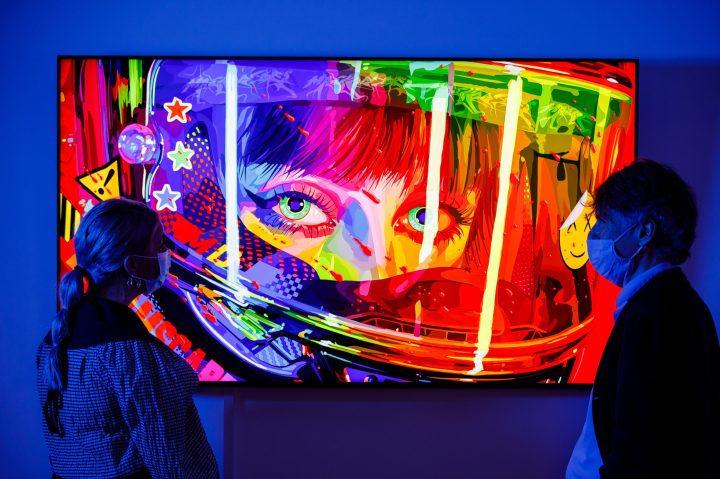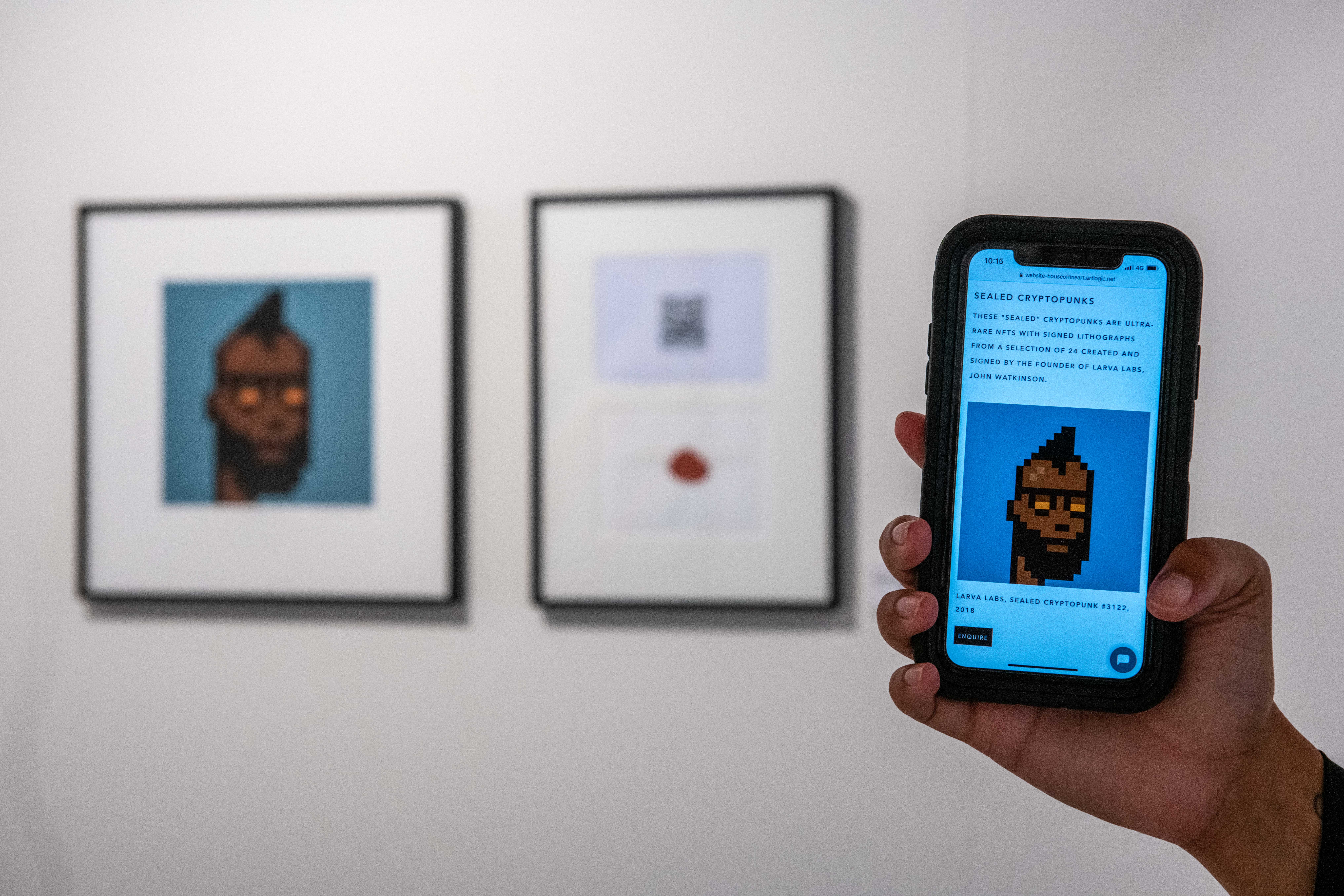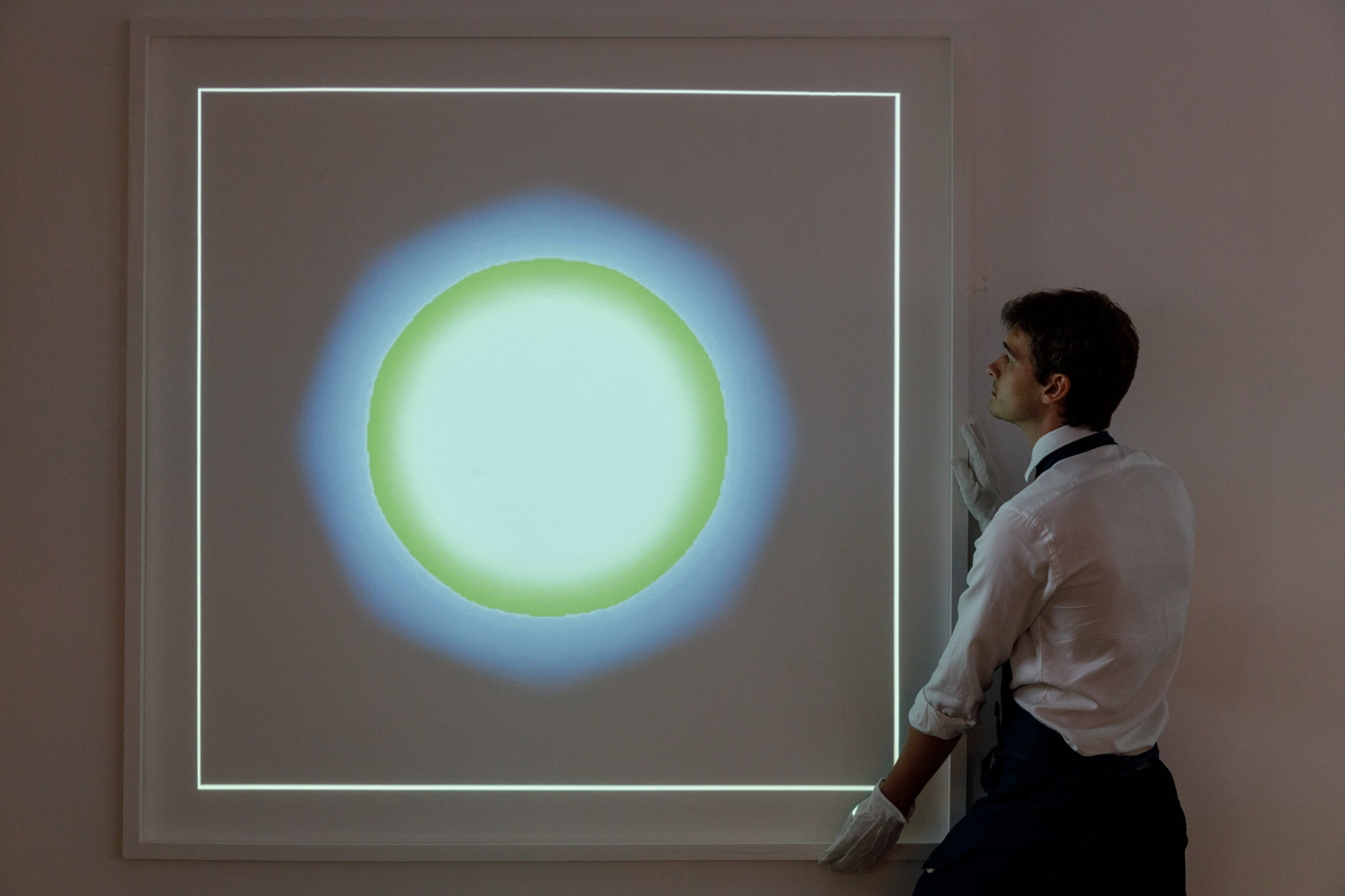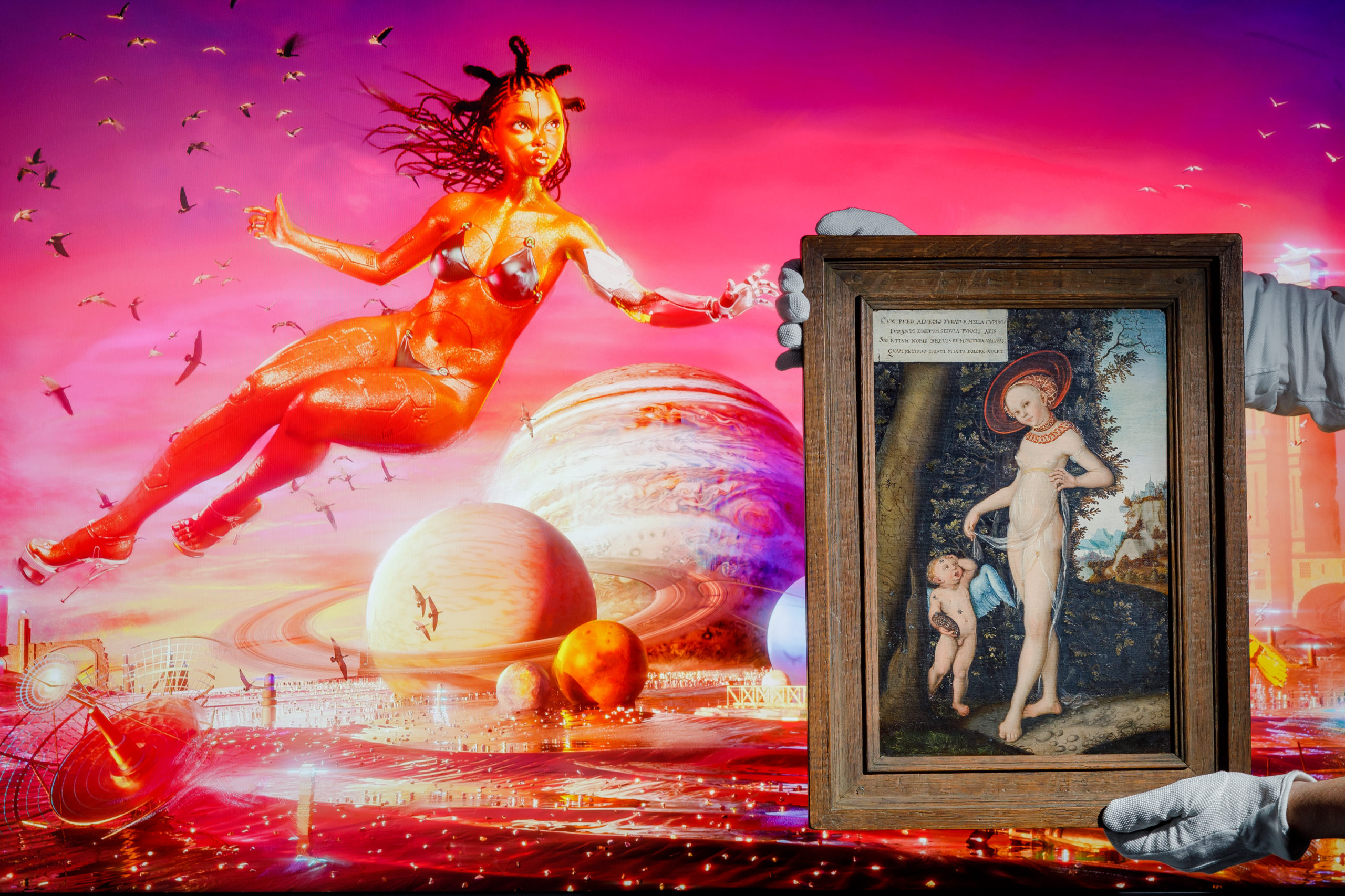MATTERS OF OBSESSION
Digital art: Are NFTs here to stay?

What has happened to the non-fungible token (NFT)? Are there NFTs for sale in South Africa? In Africa? Should you get involved? Emma Dollery takes a deep dive into the world of digital art.
At the beginning of this year, NFTs (non-fungible tokens) were all over the international news. Mike Winkelmann (more commonly known as Beeple) sold a work titled Everydays: The First 5000 Days, at a Christie’s auction in March for the equivalent of $69.3-million (over R1-billion), which was perhaps the surprising acme of the NFT craze.
Even the auction house seemed shocked by the enormous amount of money that the NFT sold for; Christie’s had no reserve price or estimate attached to the work, and bidding started at $100. While Beeple’s work still holds the title of the most expensive NFT to be sold yet, a slew of other digital works preceded and followed the iconic sale.
There was the famous Charlie bit my finger YouTube video that went viral in 2007, NBA’s (American National Basketball Association’s) Top Shot, Twitter founder Jack Dorsey’s first-ever tweet, and a wild variety of other very expensive NFTs that you may not have even heard about.
It took the world by storm – mainly because, for the first time ever, enormous amounts of money were being traded on intangible tokens that existed solely in the digital realm.
But what is happening in the world of NFTs today? When was the last time you read about them in international news or local news? Are there even NFTs for sale in South Africa? In Africa?
What is an NFT?
It’s pretty clear that NFTs are (somewhat) old news, and while there is an internet-full of accessible information explaining exactly what an NFT is (for tech gurus and dummies alike), here is a quick and limited rehash in case you need a reminder.
The word NFT stands for “non-fungible token”; a non-fungible asset is one that cannot be exchanged for something of directly the same worth in the same asset class. It is an asset that is unique, irreplicable, and irreplaceable. A painting is a good example of a non-fungible asset – no two paintings are exactly alike. A painting cannot simply be replaced with a replica.
The word “token” refers to a digital certificate that is stored on a blockchain, a secure and distributed database. In simple terms, a blockchain is a system of recording information that makes it almost impossible to change, hack or cheat. Essentially, it is made up of millions of different computers that are constantly storing, checking, and cross-checking the same information over and over again. This information is also, usually, accessible for the public, so everyone can see it.
NFTs come in a wide variety of forms. GIFs, photographs, memes, in-game items, YouTube videos, even a pixel… just about any digital thing could be an NFT.
However, when you buy an NFT, it does not mean that you alone have sole access to the video/GIF/image. In fact, even though the NFT is undeniably owned, anyone with access to the internet can still google the image, print it out and stick it on a wall, use it as a phone wallpaper – whatever. Viewing the digital art is still free and accessible for the public.
What buyers are getting when they purchase an NFT is undeniable proof (authenticated through blockchain technology), that they are the owner of the work. The digital file is embedded with a permanent signature and established provenance that will prove, forever, the creator, the owner, and the previous owners of the token. For a more in-depth explanation of what exactly an NFT is, check out this article.
What about NFTs in South Africa?
The first NFT ever sold in South Africa was put up on auction by Cape Town-based art gallery Worldart in early March. The work, created by local artist Norman O’Flynn, and listed on OpenSea (an international online platform for NFTs), was sold for about $35,000 (about R518,559).
Charl Bezuidenhout, the owner of Worldart, read about NFTs one Sunday morning in an article published in the Financial Times, which piqued his interest. He started researching cryptocurrency’s newfound role in the art world and decided to give NFTs a try.
“I’ve always been very open to new ways of doing marketing,” says Bezuidenhout. “I remember when I was working for another gallery in the year 2000. At the time art galleries didn’t use websites. Everybody was saying, ‘Websites will never work. Not in this business.’ And now look at where we are.”
Having caught the NFT bug, Bezuidenhout worked with O’Flynn to create a digital art piece based on a series of paintings titled Timekeeper, the first portrait of which was painted in 2015. O’Flynn refers to his work in this series as “observing a glitch”; the works are partly a rumination on the digital world that we exist in today, a theme which lends itself almost seamlessly to the topic of NFTs.
Interestingly, despite some of the portraits being painted a while ago, all of the figures in the series wear masks.
“It’s a filter,” Flynn offered in explanation, “we’re toxic and we spread it. We are also really busy sharing our opinions, especially on social media platforms, but do we actually make a contribution? Or is the truth that we are saying nothing because we’re too busy saying the things that we think will gain us credibility and help us look cool? So I covered the mouths.”
Could he have known how poignant the mask symbolism would be today? That his Timekeeper series would hit even harder over time?
The NFT that O’Flynn and Bezuidenhout made from the series takes the form of a GIF and is titled Da Bomb. It can be seen (but not owned) here.
O’Flynn hasn’t made an NFT since the sale of Da Bomb on 16 April, but Bezuidenhout is far from done with experimenting in NFT trading. He is currently working with two other artists represented by Worldart, Juan Stockenstroom and Kilmany-Jo Liversage, on digitising their artworks. The gallery plans to open an exhibition of Stockenstroom’s work in the near future in which the artist “will have one NFT attached to each artwork”.
But perhaps most exciting is Bezuidenhout’s plan to develop a market platform – a South African-based OpenSea, if you will – that will “allow galleries, curators, and individual artists to post and promote their NFTs”. The website should be launching within the next few weeks and will make Worldart the first gallery in South Africa to host such a platform.
Meanwhile, South African artist Faith47 has already sold a few NFTs on MakersPlace, and South African TikTok influencer and magician Wian launched his first set of NFTs in June. Bezuidenhout is sure that the South African NFT market is growing fast. “There are lots of artists who are embracing NFTs and experimenting with them,” he asserts. “I think this is bigger than we know.”
Further, the very first independent South African NFT platform, named Momint, launched a website and app in April this year. The platform sells all manner of NFTs and utilises a social media-like approach to allow users to buy and curate their own collections. Content creators like beloved rugby player Bryan Habana and electronic music duo GoldFish (among many others), are selling digital works on the platform already.

A gallery assistant holds up a smartphone displaying the gallery’s online marketplace near an NFT and signed lithograph “Sealed Cryptopunk #3122” by Larva Labs arranged, during the press preview of the Portrait of an Era exhibition, at the House of Fine Art (HOFA) Gallery in London, U.K., on Wednesday, Sept. 22, 2021. Photographer: Chris J. Ratcliffe/Bloomberg via Getty Images
Other parts of Africa have jumped on the bandwagon, too. In late April 2021 Picha Images, a digital media company, launched an auction on OpenSea featuring NFTs created by multi-award-winning Kenyan photographer and filmmaker Richard Allela. Kenyan marathon runner Eliud Kipchoge sold digital versions of his career highlights as NFTs in the same month, fetching CAN$50,000 (about R595,000) for two videos auctioned on momentible.io.
And Nigerian artist Jacon Osinachi has allegedly been working with digital art and selling NFTs for years. Platforms like Black NFT Art were created specifically for the purpose of “empowering Black people in the NFT space through content, promotion, and events”. It seems like more platforms and start-ups like these are popping up all the time.
So NFTs are here to stay?
In the midst of the NFT craze, many wary critics voiced concerns that the NFT market was simply that… a craze. A bubble that was bound to pop, leaving in its wake a burst of destruction. This New York Times article compared the NFT market to that of the 16th century “tulip mania” in the Netherlands, where, “at the height of speculative frenzy” a single bulb of Viceroy tulip sold for “enough to buy a grand house in one of Amsterdam’s most desirable districts”, only for the market to collapse a month later.
“In the beginning of the year when people started spending a lot of money on NFTs it was really hyped up on the news,” says Bezuidenhout.
“The reality is that there are millions and millions of NFTs out there. Most of them, by far most, don’t sell at all. The ones that do sell don’t fetch those ridiculous prices, but we only read about the ones that did.”
If things seemed to have died down since, Bezuidenhout is convinced that the rise of NFTs are a turning point in art history. To him, it’s less about the tokens themselves than the technology that has been developed around them.
Bezuidenhout outlines few key ways in which blockchain technology has (and will continue to) revolutionise the art world. The first has to do with the ownership and provenance of the NFT.
“In the past, a digital artwork could live on a website or your phone or wherever, but there was no way to prove who made it or owned it. What the blockchain technology has achieved is that you can now prove beyond doubt who owns the file and who has owned it before.”
The NFT is a sort of inbuilt certificate of authenticity. There is no faking the ownership of a piece, nor its history.
“The provenance of any artwork has always been important,” expands Bezuidenhout. A painting’s worth may increase significantly if it is seen in a well-known exhibition or owned by a famous collector. Similarly, “if an NFT in the secondary market was owned by, say, Bill Gates, then intrinsically it will have more value.” The difference is that now there is virtually no way of faking the provenance of an NFT – or not one that has been created yet; buyers can be certain that what they are getting is the real deal.
The second important consideration is that the creator of an NFT is perpetually linked to the product. Even after the file is sold into a secondary market, the original artist can make royalties off of any further sales. Imagine a common scenario, “a desperate young artist makes a work that they sell for close to nothing because they are in the beginning stages of their career. Years later, their career is going really well, and their painting is selling on the secondary market for millions of dollars. Yet the artist sees none of that money.” It goes instead to the art dealers, auction houses or galleries – the middlemen. “With blockchain technology, you can actually ensure that the artist gets his royalties,” explains Bezuidenhout.
Speaking of middlemen brings us to Bezuidenhout’s final point: the massive decentralisation of the art market that the rise of NFTs has the potential to galvanise.
“All of it is about decentralising things. You don’t need a bank or a gallery anymore to charge you for their services. The confirmations on the blockchain are done without anybody deciding it or charging you to fund it. The artist can make a work, put it on the platform, and sell it. The transaction is between the person who bids and the artist.” In an art world that has previously been so dictated by auction houses, art dealers, gallerists, and collectors – the middlemen gatekeepers of taste – this is a change with potentially monumental implications.
Of course, Bezuidenhout reminds us, the NFT market is not going to replace the more traditional art scenes. “It’s not going to replace paintings or change the way that we operate as gallerists per se. As a gallery owner, I can tell you that I will be selling paintings forever and will probably just use NFTs as an extra tool to make people familiar with the artists that I work with.”
For instance, the introduction of O’Flynn’s art into the digital art scene “exposed his work to a whole new segment of the market, the tech crowd that maybe traditionally weren’t that into art”.
There are, of course, multiple theories about what exactly this means for the art market, particularly the African art market. And like most big changes in the world, there are theories for epic benefits as well as pitfalls.

Kevin McCoy’s Quantum (2014) – the first artwork ever minted – goes on view as part of ‘Natively Digital: A Curated NFT Sale’ at Sotheby’s on June 04, 2021 in London, England. (Photo by Tristan Fewings/Getty Images for Sotheby’s)
The potential benefit
For the individual artists who do well for themselves selling NFTs, the digital art market is a game changer. More money can be made for the artist, with less money being lost to the middlemen. It is, for some, a total reclamation of control over one’s own work.
One major benefit for the African art market and the artists that sustain it in particular, is that this shift has potential to be an equalising moment. In an art world that is currently and historically Western-centric (with Africa’s global share of creative industries contributing less than 1% to the world’s $624-billion trade in creative goods), the decentralised nature of crypto art could mean a shift in perspective.
An African artist could sell an NFT on any number of global platforms. In theory, demand is the sole thing that determines the value of any single NFT. “That’s the beauty of the world at the moment,” says Bezuidenhout, “it’s small. If you have the internet you can do anything.”
According to Bezuidenhout, South Africa has a very vibrant art scene. “Our art scene is respected, and African art in general at the moment is being pursued by a lot of collectors.” There is a lot of potential for African artists to make it big in the NFT space.
Allela, echoing Bezuidenhout’s sentiments, told BitcoinAfrica.io in an interview earlier this year that NFTs “are one of the few moments when Africa as a continent is starting off on an almost level playing field to the West. The opportunities are open to anyone with a good internet connection and a willingness to learn.”
The already apparent issues
As wonderful as this sounds, it would be remiss to disregard the obvious systemic disadvantages that South Africa faces. One such disadvantage is the ever-present and egregious gaps between the haves and have-nots that have plagued our country for decades. With almost 20% of the population living on less than R28 a day (according to this 2020 UN report) many South Africans are struggling to get food into their mouths on a daily basis, let alone have access to the internet. That’s before considering the neglectful arts and culture department that South African artists have to deal with. Without access to funding, surviving as an artist in South Africa, especially during Covid, has proved a very difficult task for many. An issue that artists from more economically stable countries do not have to deal with.
This, then becomes an issue of a widening gap: those who have access to tools that can help them make and sell NFTs become richer, while those who are not afforded this access are left behind. As Scott Galloway, a marketing professor at New York University told The New York Times, “anything that turns economic activity into sheer speculation tends to boost inequality”.
Further, demand is rarely a totally rogue thing. People’s tastes are dictated by cultural shifts and, often, shifts in the media. An artist with a big name will have a much higher chance of auctioning an NFT at very high value than an emerging artist at the start of their career. In a world that already has a perspective skewed towards artworks of the Global North, and with Africa holding less than 5% of the global distribution of household wealth, the odds are stacked against artists from the continent.
What is clear, however, is that we are entering uncharted territory. The rise of the internet, and now NFTs, has changed the world of property ownership (digital, intellectual, and otherwise) as we know it. We are at a moment of inception – nothing feels impossible.
“Think of social media,” says Bezuidenhout. “Five years ago, 10 years ago, it wasn’t being used for art at all, and then it was. It’s an interesting moment that we are living in. There are lots of new and intriguing avenues to use to do what you do even better.”
On a separate note, it has become increasingly clear that blockchain technology is energy inefficient. The technology relies on a vast number of high-powered computers that are constantly using large amounts of electricity to power the complex algorithms necessary for the system to work.
It’s estimated that Ethereum – a global blockchain platform that powers the widely used Ether (ETH) cryptocurrency – consumes about 77.74 terawatt-hours of electrical energy a year, which is comparable to the power consumption of Chile. The blockchain’s carbon footprint sits around a whopping 36.92 metric tons of carbon dioxide a year, which is comparable to that of the entire island of New Zealand.
Other big crypto currencies like Bitcoin have also come under fire for the sheer amount of energy that they use to run, a truth that seems especially terrible in light of the recent (and terrifying) UN report on climate change that was released in August this year.
It seems, at least to Bezuidenhout, that this is a real and acknowledged issue that the tech community is currently working hard to solve.
“People are aware of this problem,” he stated. “It’s a big issue. They’re not ignoring it; they’re working on solutions. I am confident that it won’t be a problem a few years down the line.” There are already a few energy-conscious blockchain platforms that are making some inways into this pressing problem.

Serwah Attafuuah’s Creation of My Metaverse (Between this World and the Next) is seen alongside Venus with Cupid stealing honey, by a follower of Lucas Cranach the Elder, early 17th Century (est. £60,000 – 80,000) at Sotheby’s on June 04, 2021 in London, England. (Photo by Tristan Fewings/Getty Images for Sotheby’s)
How to buy an NFT
If you are a potential South African consumer who is ready to take the leap into this new frontier and invest in an NFT, how exactly do you do it?
“You are required to have a few things before you actually make a purchase,” explains Bezuidenhout. “The first is to buy cryptocurrency and put it in an e-wallet.”
Luno, “the world’s most international cryptocurrency team,” (according to its website) has headquarters in Cape Town, and a very user-friendly website that can teach you, step by step, how to begin the process of buying cryptocurrency.
Having completed this first step, one would have to “transfer that to another wallet called a metamiles, which is the one that is being used by the Ethereum blockchain to pay for NFTs on that blockchain”.
Apps and websites like Momint, OpenSea, Rarible, and many others (as well as Worldart gallery’s soon-to-be-launched platform) will then hold online auctions in which users can bid for a certain number of days. Each of these platforms has varying specifics in the process it takes to get to a bidding point, which are explained in digestible ways on their respective websites.
From there, it’s a piece of cake. “If you win the bid, and your price is highest,” says Bezuidenhout, “then it will simply transfer the money into the wallet of whoever the original owner or creator was, and the NFT will be transferred into your wallet. It’s yours.”
“The best thing,” says Bezuidenhout, “is that the information is so available. You can just google it or go on YouTube and learn. It’s just a matter of accessing it and making the time.”
To Bezuidenhout, the realm of NFTs, cryptocurrencies, and blockchain platforms is “a whole new chapter in technology that will change the world significantly.” And it’s just at the end of our keyboard-tapping fingertips. DM/ML















 Become an Insider
Become an Insider
Comments - Please login in order to comment.